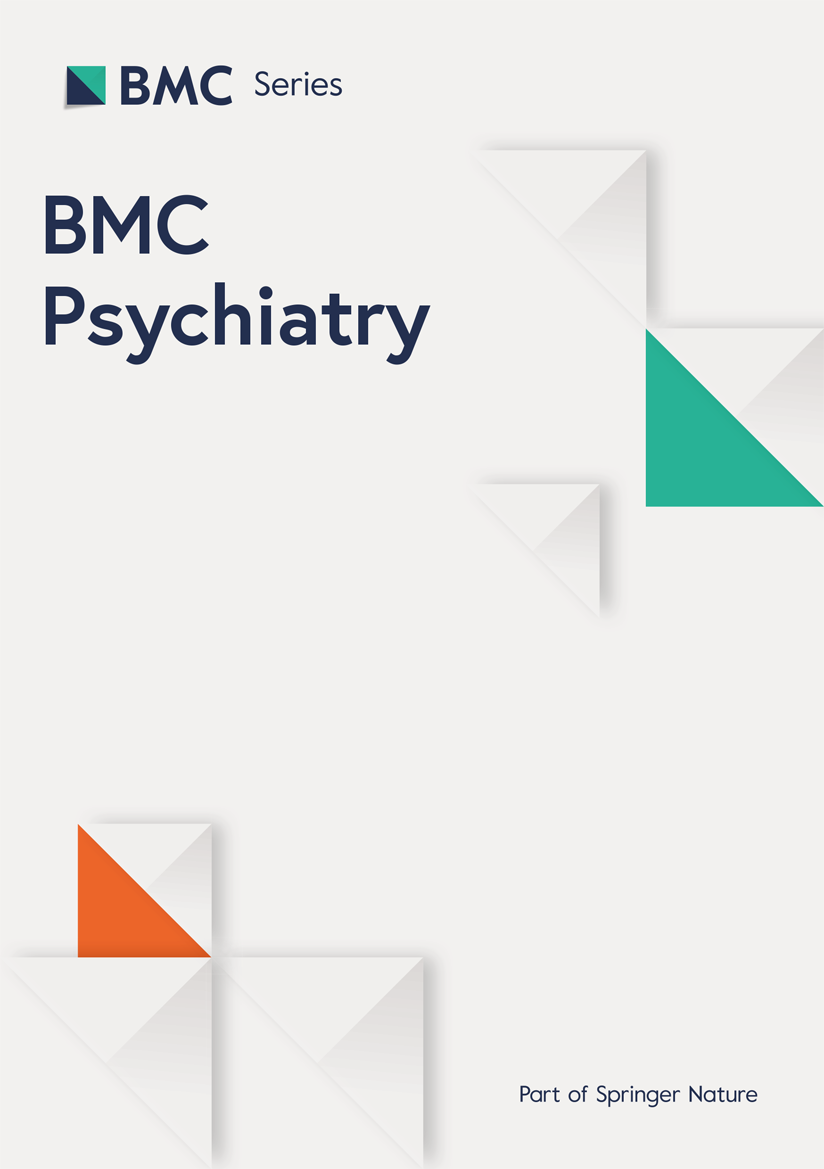BMC Pregnancy and Childbirth volume 25, Article number: 652 (2025) Cite this article
Mothers with preterm infants are more likely to have perinatal mood disorders than mothers carrying to term, have problems breastfeeding, and may be dissatisfied with the role of being a mother. This study was conducted to investigate and compare the effects of obsessive-compulsive (OCD) behaviour and breastfeeding self-efficacy on satisfaction with the role of motherhood. in the postpartum period in mothers of preterm or term infants.
The descriptive, case-control, analytical study was conducted with 175 mothers of late preterm and 175 mothers of term. The descriptive Information Form, Scale for Obsessive, Compulsive Behaviors of Mothers in the Postpartum Period with regard to Baby Care (OCB-PPBC), The Breastfeeding Self-Efficacy Scale - Short Form (BSES-SF), and The Being a Mother Scale (BaM-13) were used as data collection tools.
The BSES-SF score of the mothers of term infants was higher than the mothers of late preterm infants (t=-5.147; p < 0.001), the BaM-13 score and the Child Experience sub-dimension score were lower (t = 1.988; p = 0.048 and t = 2.263; p = 0.024, respectively). A negative correlation was found between BSES-SF scores of mothers of late preterm infants and their Scale for OCB-PPBC scores (r=-0.253, p = 0.001). A negative correlation was also found between BSES-SF and BaM-13 scores of both mothers of late preterm and term infants (r= -0.343, p < 0.001 and r= -0.343, p < 0.001, repsectively). A positive correlation was found between Scale for OCB-PPBC scores and BaM-13 scores of both mothers of late preterm and term infants (r = 0.311, p < 0.001; r = 0.206 and p = 0.006, respectively).
We believe that health professionals can contribute to increaseding maternal satisfaction with motherhood by carefully screening mothers to be for OCD behavior related to baby care in the postpartum period, improving mother-infant interaction, care practices and approaches that support maternal attachment, and supporting breastfeeding.
Being a mother, one of the most important developmental roles in a woman’s life, is completed with the birth of the infant, the acquisition of maternal skills, seeing herself as an adequate mother and developing a new identity [1]. The role of infant careR provide the mother with competence, increase her satisfaction and happiness [2]. However, with the unexpected premature birth of an infant, mothers may experience difficulties in transitioning to the maternal role [3], and may experience feelings of guilt and failure for not being able to complete the pregnancy or for not being able to protect their infants [4, 5], Moreover, hospitalization of the premature infant in the neonatal intensive care unit (NICU) requires parents to adapt to new roles [6], which may cause changes in their daily routines [7], can make maintenance difficult [8] and negatively affect the family organization [9]. If mothers’ experience of giving birth prematurely is not addressed appropriately [10], dissatisfaction can persist, negatively affecting postpartum mood and mother/infant interaction [11].
Negative experiences in the maternal role interrupt breastfeeding and affect the mother’s perception of breastfeeding self-efficacy [12]. The mother’s breastfeeding self-efficacy perception is affected by the mother’s breastfeeding effort and her feelings and thoughts about it [13]. In many studies, mothers with high breastfeeding self-efficacy were associated with more successful breastfeeding rates [13,14,15]. However, practices that physically and emotionally separate preterm infants from their mothers pose a risk to the provision and maintenance of breastfeeding [16]. Thus, the mother’s motivation and belief in breastfeeding are decisive in overcoming the challenges of breastfeeding [17].
Mothers who are not prepared for preterm birth may feel inadequate when it is time to take the infant home [18], and may not want to care for the infant alone [19]. The mother’s psychological characteristics also affect her ability to care [8]. Negative experiences in the postnatal period may effect the development of obsessive-compulsive behaviours related to infant care [20]. OCD encountered in this period is an anxiety disorder that tends to start or worsen after birth [21]. The average age of onset of OCD coincides with the reproductive years during stressful situations such as pregnancy and the postnatal period [22], and its prevalence is reported to vary between 0.7% and 9% [23, 24]. Which is approximately 1.5-2 times higher than women in the general population [25]. Although much less is known about OCD in the postpartum period, there is a growing consensus among researchers and clinicians that postnatal symptoms of OCD represent a serious problem that is under-recognised [26, 27], with many women failing to receive appropriate care for this [28]. During this period, mothers may try to stay away from their infant because they think they will harm them [29]. Studies have stressed that the postnatal onset of OCD has negative effects on the role of motherhood and thus on the cognitive-behavioural development of the newborn [30, 31]. Additionally, a study by Challacombe et al. found that breastfeeding rates were lower in mothers with OCD [23]. In the study conducted by Duman and Dinçkaya, it was shown that as the obsessive and compulsive behaviors of Turkish mothers regarding baby care increased, their perception of breastfeeding self-efficacy decreased. However, researchers have found other studies to support these results.
The mother’s self-confidence from the first postpartum day, her active participation in infant care and her persistence with breastfeeding will facilitate her adaptation to the role of being a mother [32]. It has been reported that health professionals play an important role in supporting breastfeeding mothers, highlighting the need for empowerment and encouragement to improve mothers’ self-efficacy in breastfeeding [33, 34]. In addition, since postpartum OCD is not addressed separately in the DSM-5 assessment and does not receive much attention in the clinic, health professionals should be more aware of and sensitive to this issue and question it [23].
Although there are limited studies examining obsessive-compulsive behaviours of postpartum mothers, it has become a subject of interest in recent years [26, 35, 36]. In addition, studies have shown that mothers of preterm infants are more at risk of anxiety disorders [37], experiencing problems withbreastfeeding [38], and are more likely to be dissatisfied with the role of being a mother during the hospitalisation of their infants [39]. To the best of our knowledge, there is no previous study investigating and comparing the effect of obsessive compulsive behavior regarding infant care of mothers of late preterm with mothers of term infants on breastfeeding nursing self-efficacy and maternal satisfaction with motherhood in the postpartum period. Hence, the rationale for the present study.
The aim of this study was to investigate and compare the effects of obsessive-compulsive behavior of mothers of preterm and term infants regarding baby care in the postpartum period on breastfeeding self-efficacy and maternal satisfaction.
The research was designed as a descriptive, case-controlled analytical study. This study was conducted between March 2021 and September 2022 in two university clinic in western Turkey. One of these was the ‘Newborn and Premature Infant Follow-up Outpatient Clinic’ with a total of 28 beds, including a 24-bed newborn intensive care unit and four mother-accompanied rooms, in which an average of 1300 newborns are examined annually and treatment is provided by a professor, two associate professors, two assistants and 20 nurses in the field of neonatology. The other center was hospital with a neonatal outpatient clinic, in which an average of 1150 newborns are treated annually, and the neonatal intensive care unit has 55 beds, a Neonatology Specialist, a Subspecialty Assistant and 50 nurses.
The potential study population consisted of all mothers attending the Neonatal Outpatient Clinic of two centers in two different provinces between the fourth and eighth weeks after birth. The sample number was calculated with the G*Power 3.1.9.4. program and the power value was taken as 1-β(Power) = 0.95 with a margin of error of α = 0.05 at an effect size of 0.98. The number of participants in each group (groups of mothers of preterm and term infants) was determined to be n = 170. Considering the possibility of loss during data collection, a target recruitment of a total of 350 mothers accepting to participate in the study was set. The inclusion criteria for the study were: mothers over 18 years of age; volunteering to participate in the study between the fourth and eighth weeks after birth (the optimum post-partum period for applicability of the scales to be used); no chronic illness or abnormalities in mother or infant that prevent breastfeeding and babies born at 36 or more weeks of gestation who have been at home with the mother for at least four weeks.
Data were collected using a demographic questionnaire prepared by the researchers, Scale for Obsessive, Compulsive Behaviors of Mothers in the Postpartum Period with regard to Baby Care, The Breastfeeding Self-Efficacy Scale - Short Form (BSES-SF), and The Being a Mother Scale (BaM-13). The researchers distributed data collection forms to the participants and asked them to fill the forms out. The data collection process took about 20 min.
In order to collect the descriptive characteristics of families in the postnatal period, this questionnaire was designed with reference to the current literature. It consisted of 15 questions about the descriptive characteristics of the mothers (age, educational status, employment status, income status), the characteristics of the mothers related to pregnancy and childbirth (planned pregnancy, use of assisted reproductive techniques, mode of delivery) and the descriptive characteristics of the infants (gender, nutritional status, hospitalisation).
The scale developed by Özdemir et al. (2019) to determine the obsessive and compulsive behaviours of mothers related to infant care in the postpartum period is one-dimensional and consists of nine items. In the five-point Likert-type scale, items are scored from 1 to 5. The scoring is as follows; ‘It does not define me at all’ (score = 1), to ‘It defines me a lot’ (score = 5). Cronbach’s alpha value of the scale was 0.75. The lowest score that can be obtained from the scale is 9 and the highest score is 45. A high total score on the scale indicates that mothers in the postpartum period have more obsessive and compulsive behaviours related to infant care. In this study, the Cronbach alpha value of the OCB-PPBC was found to be 0.84 in mothers of preterm infants and 0.87 in mothers of term infants [21].
The BSES originally consisted of 33 items and was developed by Dennis in 1999. The scale was revised in 2003 to generate the 14-item BSES-SF [40]. This scale determines the extent to which mothers perceive themselves as adequate when breastfeeding. The validity and reliability of the scale in Turkeish was performed by Tokat Aluş, Okumuş ve Dennis (2010) [41]. The Cronbach’s α was 0.94 in the study by Dennis and 0.86 in the study by Tokat Aluş et al., and for mothers of preterm infants 0.89, and for mothers of preterm infants 0.87 in the present study. The BSES-SF is a 5-point Likert scale that ranges from “I am not sure” (1 point) to “I am always sure” (5 points). The scoring ranges from 14 to 70, and the higher the score, the higher the breastfeeding self-efficacy [40]. The minimum score that can be obtained from the scale is 14, and the maximum is 70.
The BaM 13 was developed by Matthey (2011) to determine the motherhood experiences of mothers with children aged 0–3 years [10]. The BaM-13 consists of 13 items that cover three domains including the child’s experience, the adult’s experience, and emotional closeness. Specifically, items about mothers’ feelings of loneliness or isolation, confidence about looking after the baby/toddler, closeness to the baby/toddler, a lack of support, coping, and guilty feeling are included. The respondents report on how they felt for the previous 2–3 weeks during the transition into motherhood on a Likert scale that ranges from 0 points to 3 points. For example, item 1 is “I have felt confident about looking after my baby/toddler,” and a score of 0 points indicates “Yes, most or all of the time,” 1 point indicates “Yes, some of the time,” 2 points indicates “No, not very often,” and 3 points indicates “No, rarely or never.” The total possible scores for the 13 items range from 0 points to 39 points, and a lower score indicates a greater level of maternal satisfaction. The Cronbach’s α was 0.79 in the study by Matthey, and in the current study for mothers of preterm infants it was 0.79, and for mothers of preterm infants 0.69.
The data were assessed statistically using SPSS, version 26 (IBM Inc., Armonk, NY, USA). Data are reported as frequency distribution (number, percentage) for categorical variables and descriptive statistics (mean, standard deviation, minimum, maximum) for numerical variables. Firstly, the Kolmogorov-Smirnov test was performed to assess normality of data set distribution. Since the arithmetic mean, mode and median of the inappropriate parameters were equal or close to equal, the skewness and kurtosis coefficients were close to 0 within ± 1 limits, and the skewness and kurtosis indices calculated by dividing the skewness and kurtosis coefficients by their standard errors were close to 0 within ± 1.96 limits, the suitability of the normal distribution was assumed and parametric tests were used [42,43,44]. Independent sample t-test and one-way analysis of variance (ANOVA) were used to determine whether there was a difference between demographic characteristics in terms of scale and dimension scores. Pearson correlation analysis was used for the relationship between numerical measurements, chi-square analysis was used to examine the relationship between categorical variables and the Cronbach alpha value was used for scale reliability. Multiple linear regression analysis was applied to examine the effect factors on the BaM-13 score and the BSES-SF score. A p < 0.05 was accepted for significance.
The study was conducted with the participation of 350 mothers, 175 in the group with preterm infants and 175 in the group with term delivery babies. Demographic characteristics of the participants and their relationship with scale scores are shown in Table 1. Statistically significant differences were not found between the mean of OCB-PPBC, BSES-SF and BaM-13 scores of the participants based on their age (p > 0.05). Statistically significant differences were not found between the mean of BSES-SF and BaM-13 scores of the participants based on Mother’s Education level (p > 0.05), but a significant one was found in the mean of the OCB-PPBC scores (p < 0,05). Not working participants had a significantly higher OCB-PPBC mean score than those working (p < 0.05). No statistically significant difference was found in the mean of the BSES-SF or the OCB-PPBC scores based on whether they had an intended pregnancy and infant gender (p > 0.05), but but a significant one was found in the mean of the BaM-13 scores (p < 0,05). No statistically significant relationship was found between the mean of the OCB-PPBC scores and the delivery mode or the presence of a condition requiring the baby’s hospitalization (p > 0.05). Exclusively breastfed participants had a significantly higher BSES-SF mean score than those breastfed and formula (p < 0.05).
When the scale scores of the mothers of preterm and term infants were compared, no statistical difference was found between the scores of the Scale for OCB-PPBC (t = 1,234; p = 0.218). However, the BSES-SF score of mothers of term infants was found to be higher than that of mothers of preterm infants (t=-5.147; p < 0.001), and the sub-dimension scores of Being a Mother and Child Experience of mothers of term infants was also higher than that of mothers of preterm infants (t = 1.988; p = 0.048 t = 2.263; p = 0.024, respectively) (Table 2).
When the relationships between scale scores was examined, a negative correlation was found between the BSES-SF score and OCB-PPBC scores of preterm infant mothers (r= -0.253, p = 0.001), whereas this relationship was not found in mothers of term infant (r = 0.100, p = 0.190). A significant negative correlation was found between the BSES-SF score and BaM-13 scores of mothers of both preterm and term infants (r = 0.343, p < 0.001 and r = 0.343, p < 0.001, respectively). There was a positive correlation between the OCB-PPBC score and BaM-13 scores of mothers of both preterm and term infants (r = 0.311, p < 0.001 and r = 0.206, p = 0.006, respectively). A negative correlation was found between the BSES-SF score and the BaM-13 sub-dimensions of Child Experience, Adult Experience, and Emotional Closeness scores in mothers of preterm infants, whereas a positive correlation was identified between the OCB-PPBC and the BaM-13 subscales of Child Experience, Adult Experience, and Emotional Intimacy scores in mothers of preterm infants (p < 0.05). In mothers of term infants there was a negative correlation between the BSES-SF score and the BaM-13 sub-dimension scores of Child Experience, Adult Experience, and Emotional Intimacy. Moreover, in this group there was also a positive correlation between the OCB-PPBC and the BaM-13 subscales of Child Experience, Adult Experience, and Emotional Intimacy (p < 0.05). It is seen that the relationships between the measurements are at low or medium level. However, since the sample size is quite high (n:350), it should be said that the relationship levels determined at low or medium level are statistically significant. (Table 3).
Table 4 shows the findings from regression analysis, in which the effect of scales and some sociodemographic characteristics on the BaM-13 score in mothers of preterm and term infants was analysed, the variance explained by the BaM-13 score for the OCB-PPBC score and the BSES-SF score was significant (p < 0.001). The variance was 17.1% in mothers of preterm infants. The BaM-13 score was an explanatory factor on the OCB-PPBC score and the BSES-SF score (p < 0.001). In the group of mothers with term infants, this explained 23.3% of variance and was a significant explanatory factor on the OCB-PPBC score, the BSES-SF score, planned pregnancy and infant gender (p < 0.001) (Table 4).
Results obtained from this study; It has been observed that maternal satisfaction has an impact on mothers’ breastfeeding self-efficacy and obsessive-compulsive behaviors related to baby care. Seventeen per cent of the total variance in mothers of late preterm infants satisfaction with motherhood is explained by OCB-PPBC and BSES-SF scores and, fourteen per cent of the total variance in mothers of late preterm infants satisfaction with motherhood is explained by OCB-PPBC and BSES-SF scores (Table 4) was one of the remarkable findings of this study. Women’s adaptation to the maternal role and their concerns about this new role may affect the mother’s thoughts and behaviour about breastfeeding [32]. Negative experiences in the postnatal period have also been shown to have an effect on the development of obsessive-compulsive behaviour related to infant care [30].
Becoming a mother is part of the life course of many women. These new mothers need to create an emotional bond between themselves and their infants that conforms to societal expectations about behaviour, values and feelings [45]. Although giving birth prematurely is as natural as the birth of a full-term newborn, it makes the process of becoming a mother more complicated [5]. Mothers’ experiences of the maternal role differ due to reasons such as the different care needs of a preterm newborn and the need for intensive care [46]. In the present study, maternal satisfaction of mothers of preterm infants was lower than that of term infants. In similar studies, it was reported that the scores of the BaM-13 Scale showed variability [2, 47]. Similar to the results of the present study, studies conducted with Turkish mothers have shown that unplanned pregnancies negatively affect maternal behaviors in the postpartum period, and that planned pregnancies positively affect maternal role achievements [48, 49]. Each woman’s maternal role acquisition process and maternal role experiences are different. The maternal experience is multifactorial and thus differences in personal experience will emerge.
It has been shown that negative experiences in the postnatal period may predispose to the development of OCD behaviour related to infant care [21]. Studies have provided preliminary evidence that the postnatal period is associated with both an increase in the incidence of OCD and exacerbation of pre-existing OCD symptoms [22, 27, 50]. In the present study, no difference was found between mothers of term and preterm infants regarding the scores reported by these two groups on the OCB-PPBC. Furthermore, the scale scores were similar and above the average previously reported [51,52,53]. The uncertainties of the COVID-19 pandemic have led women to be unable to go to health institutions, fear infections and think of the possibility of harming their baby or themselves in this process [54, 55]. Apparently, the COVID-19 pandemic has increased women’s obsessive and compulsive behaviors related to baby care. As the age of the mothers participating in the study increased, obsessive and compulsive behaviors were found to decrease and were similar to the literature [56]. As mothers age, they may gain experience in baby care and life, which may reduce their obsessive and compulsive behaviors.
In preterm infants, reasons such as undeveloped sucking skills, hospitalisation, and delayed meeting of the mother with her infant interrupt breastfeeding and affect self-efficacy perception [57, 58]. In the present study, as in many other studies, the breastfeeding self-efficacy of mothers of term infants was better than that of mothers of preterm infants [58, 59]. Among mothers of term and preterm babies, those who exclusively breastfeed their babies have higher BSES-SF scores. Studies have found that the breastfeeding self-efficacy of mothers who exclusively breastfeed their babies is higher than that of mothers who breastfeed their babies with breast milk and supplementary food. The mean BSES-SF score (49.03 ± 9.78) of mothers of preterm babies whose babies are hospitalized is lower. Hospitalization of the baby after birth can cause negative emotions such as anxiety, worry, inadequacy, etc. in mothers and can negatively affect their perception of breastfeeding self-efficacy [60].
It has been shown that postnatal mental health problems among mothers may be an obstacle to optimal breastfeeding [61, 62]. In the current study, as the breastfeeding self-efficacy of mothers of preterm infants increased, their scores indicating obsessive and compulsive behaviour related to infant care decreased, but this relationship was not found in mothers of term infants. Challacombe et al. reported breastfeeding rates of mothers diagnosed with OCD to be low [22]. Phillips et al. (2022) reported more breastfeeding problems in mothers with OCD symptoms [63]. In a study conducted by Jiang et al. with 742 mothers with infants under six months of age in China, breastfeeding behavior changes due to maternal mental health problems were significantly associated with self-efficacy. OCD should be carefully detected during pregnancy to protect the health of the newborn [64].
Breastfeeding performance is a central component in maternal experiences and represents being a “good mother” for some women [65]. Again, in many cultures, breastfeeding is perceived as an expression of a dedicated maternal role that is tailored to the needs of the infant and supports the optimal physical and emotional health of the infant [15]. We found evidence of this association because as breastfeeding self-efficacy of mothers increased, maternal satisfaction also increased. In a study conducted by Niela-Vilén et al. with mothers (n = 124) whose preterm babies were born prematurely and whose babies were in NICU, it was found that mothers’ attitudes towards breastfeeding predicted factors relating to the maternal role.
The present research has some limitations. First, the data acquired are limited to mothers of borderline preterm infants and cannot be generalized to all periods. Additionally, the data were evaluated in line with the personal answers given to the questions included in the measurement tool.
Another limitation of the study is that although the BaM-13 Scale is a valid and reliable tool for the Turkish population, the reliability coefficient in our study was low. Studies using different scales related to motherhood are recommended.
There was no difference between the scores of women with preterm or term infants on the OCB-PPBC. However, significant differences were found between the groups in terms of BSES-SF, BaM-13 and BaM-13 sub-dimension scores. Furthermore, mothers of term infants had higher rates of planned pregnancy and early infancy than mothers of preterm infants, while the rates of stillbirth, conception with assisted reproductive techniques, having a girl infant, receiving postnatal education and hospitalisation were higher in mothers of preterm infants. We believe that health professionals can contribute to increased maternal satisfaction with motherhood by carefully screening mothers-to-be for obsessive-compulsive behavior related to baby care in the postpartum period, improving mother-infant interaction, care practices and approaches that support maternal attachment, and supporting breastfeeding.
The data used to support the findings of this study are available from the corresponding author upon request.
The authors would like to thank all the mothers who participated in the study. This research was produced from the doctoral thesis of the first author.
The author(s) received no financial support for the research.
The study was approved by Ethics Committee of Kocaeli University Faculty of Medicine (Approval Number: 2021/37, Date: 29/01/2021) and the appropriate hospital management granted the required authorization. The study was conducted in accordance with the principles of the Declaration of Helsinki. Informed verbal and written consent was obtained from the volunteers participating in the study. Necessary permissions were obtained from Prof. Dr. Merlinda Aluş Tokat for the use of the BSES-SF, Research Assistant Kevser Ozdemir for the use of the Scale for Obsessive, Compulsive Behaviors of Mothers in the Postpartum Period with regard to Baby Care and Nurse Döndü Sevimli Güler for the use of The BaM-13 via e-mail. Also,
Not applicable.
The authors declare no competing interests.
Springer Nature remains neutral with regard to jurisdictional claims in published maps and institutional affiliations.
Open Access This article is licensed under a Creative Commons Attribution-NonCommercial-NoDerivatives 4.0 International License, which permits any non-commercial use, sharing, distribution and reproduction in any medium or format, as long as you give appropriate credit to the original author(s) and the source, provide a link to the Creative Commons licence, and indicate if you modified the licensed material. You do not have permission under this licence to share adapted material derived from this article or parts of it. The images or other third party material in this article are included in the article’s Creative Commons licence, unless indicated otherwise in a credit line to the material. If material is not included in the article’s Creative Commons licence and your intended use is not permitted by statutory regulation or exceeds the permitted use, you will need to obtain permission directly from the copyright holder. To view a copy of this licence, visit http://creativecommons.org/licenses/by-nc-nd/4.0/.
Öztürkler, S., Çınar, N. Effect of obsessive compulsive behavior and breastfeeding self-efficacy on maternal satisfaction in the postpartum period: a case-control study. BMC Pregnancy Childbirth 25, 652 (2025). https://doi.org/10.1186/s12884-025-07739-1











